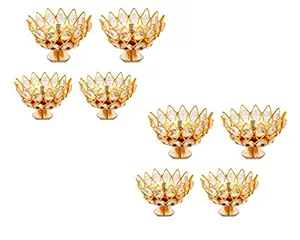એક વાર બોલું કે બે વાર બોલું કે
ત્રણ વાર બોલું ઓ મા,
મા તમે ગરબે રમવા આવજો…
ગરબે રમવા આવજો માડી,
દર્શન દેવા આવજો,
ઉતારા દેશું રે મા તને મેડીના મોલના,
એક વાર આવીને મારે મંદિરીયે
ઉતારા કરતા જાવ,
મા તમે ગરબે રમવા આવજો…
ભોજન દેશું રે મા તને મોંઘાને ભાવતા,
એક વાર આવીને મારે મંદિરીયે
ભોજન કરતાં જાવ
મા તમે ગરબે રમવા આવજો…
Overview of “Ek Vaar Bolu Ke Be Vaar Bolu”
Title & Meaning
“Ek Vaar Bolu Ke Be Vaar Bolu” translates to “Should I say it once or twice?”, expressing the playful devotional tone in Garba.
Artist & Recording Details
Performed by popular Gujarati Garba singers, available on YouTube, Spotify, and other music platforms.
Genre & Occasion
This is a traditional Gujarati Garba song, commonly played during Navratri evenings for devotional dance and celebration.
Language & Dialect
Lyrics are in Gujarati, incorporating folk expressions and devotional phrases familiar to local audiences.
Popularity & Versions
This Garba has multiple recorded and live versions, enjoyed across Gujarat during Navratri and streamed on digital platforms.
Lyrics Structure & Themes
Invocation & Praise
Begins with an invocation to the Goddess, praising her attributes, setting a devotional and celebratory tone.
Repetition & Chorus
Repeated lines and refrains invite group participation and make the song easy to follow for Garba circles.
Imagery & Symbolism
Lyrics use imagery of dancing, devotion, and festive energy, evoking joy and collective worship.
Dance Cues & Movement
Rhythmic cues embedded in lyrics guide dancers in spins, footwork, and circle movements.
Emotional Arc
The song moves from playful invocation to energetic dance, creating a joyful and devotional experience.
Musical & Performance Elements
Instrumentation & Rhythm
Traditional instruments like dhol, manjira, and folk percussion support Garba rhythm, keeping dancers in sync.
Tempo & Dynamics
Starts at a moderate tempo, gradually increasing energy to match festive Garba performances.
Live vs Studio Versions
Live performances feature audience participation and call-and-response; studio versions are polished and suitable for streaming.
Dance Integration
Lyrics and rhythm align with traditional Garba dance steps, guiding spins, steps, and group formations.
Audience Participation
Refrains and repeated choruses encourage clapping, echoing, and dancing together, boosting engagement.
Festival & Cultural Significance
Navratri Significance
Essential Garba song for Navratri nights, celebrating the Divine Mother and fostering community worship and devotion.
Community Bonding
Brings families and communities together in dance, fostering shared cultural identity and festive spirit.
Preserving Folk Tradition
Helps maintain Gujarati folk Garba traditions by encouraging participation, streaming, and teaching younger generations.
Emotional & Spiritual Uplift
Evokes joy, devotion, and spiritual connection, uplifting participants’ spirits during Garba celebrations.
Visual & Costume Elements
Garba performances with this song often include colorful attire, mirror work, and festive lights, enhancing visual appeal.
How to Use & Share
Translations & Transliteration
Providing Gujarati→English or Hindi translations helps non-Gujarati speakers understand lyrics and increases page reach.
Audio / Video Embeds
Embed YouTube, Spotify, or Apple Music links to allow visitors to listen and engage directly on the page.
Printable Lyrics & PDFs
Offering printable or downloadable lyrics lets devotees follow along offline or during Garba events.
Performance Tips
Guide on how to use the song in Garba events: chorus timing, increasing tempo, and audience participation.
SEO & Sharing Enhancements
Use meta keywords like “Ek Vaar Bolu Ke Be Vaar Bolu”, “Gujarati Garba song”, artist tags, share buttons, alt text for audio/video to improve indexing.
“Ek Vaar Bolu Ke Be Vaar Bolu” translates to “Should I say it once or twice?”, expressing the playful devotional tone in Garba.
Performed by popular Gujarati Garba singers, available on YouTube, Spotify, and other music platforms.
This is a traditional Gujarati Garba song, commonly played during Navratri evenings for devotional dance and celebration.
Lyrics are in Gujarati, incorporating folk expressions and devotional phrases familiar to local audiences.
This Garba has multiple recorded and live versions, enjoyed across Gujarat during Navratri and streamed on digital platforms.
Begins with an invocation to the Goddess, praising her attributes, setting a devotional and celebratory tone.
Repeated lines and refrains invite group participation and make the song easy to follow for Garba circles.
Lyrics use imagery of dancing, devotion, and festive energy, evoking joy and collective worship.
Rhythmic cues embedded in lyrics guide dancers in spins, footwork, and circle movements.
The song moves from playful invocation to energetic dance, creating a joyful and devotional experience.
Traditional instruments like dhol, manjira, and folk percussion support Garba rhythm, keeping dancers in sync.
Starts at a moderate tempo, gradually increasing energy to match festive Garba performances.
Live performances feature audience participation and call-and-response; studio versions are polished and suitable for streaming.
Lyrics and rhythm align with traditional Garba dance steps, guiding spins, steps, and group formations.
Refrains and repeated choruses encourage clapping, echoing, and dancing together, boosting engagement.
Essential Garba song for Navratri nights, celebrating the Divine Mother and fostering community worship and devotion.
Brings families and communities together in dance, fostering shared cultural identity and festive spirit.
Helps maintain Gujarati folk Garba traditions by encouraging participation, streaming, and teaching younger generations.
Evokes joy, devotion, and spiritual connection, uplifting participants’ spirits during Garba celebrations.
Garba performances with this song often include colorful attire, mirror work, and festive lights, enhancing visual appeal.
Providing Gujarati→English or Hindi translations helps non-Gujarati speakers understand lyrics and increases page reach.
Embed YouTube, Spotify, or Apple Music links to allow visitors to listen and engage directly on the page.
Offering printable or downloadable lyrics lets devotees follow along offline or during Garba events.
Guide on how to use the song in Garba events: chorus timing, increasing tempo, and audience participation.
Use meta keywords like “Ek Vaar Bolu Ke Be Vaar Bolu”, “Gujarati Garba song”, artist tags, share buttons, alt text for audio/video to improve indexing.


